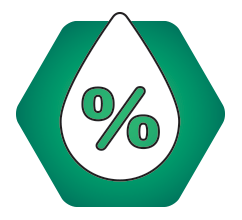The down time between flocks is a critical part of a grower’s litter management program that can either make the house run more smoothly during the next flock or make things worse.
9 Easy Ways to Improve Poultry House Air Quality
The air quality in your poultry houses ties in so closely to your bird's health and your profitability. Maintaining optimal air quality is easy though with these 9 tips
Summer Poultry House Preparation for Maximum Ammonia Control
Hot, humid summer days means house pre-heating isn’t necessary, right? Wrong! One of the biggest myths regarding house preparation during summer months is that proper pre-heating is not required since it only takes an hour or two to heat the litter.
Quick Tips for Poultry House Clean Out
When it's time for poultry house clean out and litter replacement, keep these 6 easy tips in mind to maximize success with the next flock.
Good Brooding and Good Paws go Hand-in-Hand
The keys to good brooding and preventing paw lesions are one and the same.
Factors in the Development of Poultry Paw Lesions
Much attention has been paid to the condition of the litter in the last week or so of a bird’s life in regards to poor quality paws. However, by then it’s too late. Poultry paw lesions, or footpad dermatitis, begin to form in the first week of the bird’s life when the foot is still tender and easily damaged.
Partial Clean Out for Poultry Manure Management
If your goal is to remove the ammonia challenge and high nutrient load caused by excessive litter depth, it may be beneficial to reduce the volume of litter in the house through a partial clean out. V
Quick tips for Managing Litter During Downtime
Here are 6 quick tips for managing litter during downtime.
Poultry House Management: When to clean out?
Poultry litter is really alive and has a complete, complex microbial ecology contained in the bedding material. The ecology of poultry litter can be one favorable for bird growth and performance or it can be a source of challenges.
Corn Prices Demand Careful Evaluation of Poultry House Conditions
November 2012 marked a milestone for Georgia farmers: it was the first time the state ever imported corn. The reason? Last summer’s severe drought sent corn prices skyrocketing.
5 Quick Tips to Maintain Paw Quality
A litany of paw problems awaits you if you have damp poultry litter. Treatment is simple thankfully, and paw quality can be maintained if you follow these five easy steps from day one.
Applicator Service Maximizes Ammonia Control, Improves Litter Management
As turkey and broiler producers continue to battle rising feed costs, the impact of ammonia and tight profit margins, the Jones-Hamilton Agricultural Division is helping them strike back with litter management education and application services.
Winter Ventilation Tips for Better Litter Management
The main role of winter ventilation strategies is moisture control. Because of that, the most important factor in monitoring air quality and ventilation success during the winter is relative humidity.
5 Quick Tips About Relative Humidity
When excessive moisture exists in broiler litter it can cause litter caking, increase paw lesions and make it difficult to retain heat, thereby lowering a bird’s body temperature which can be detrimental to weight gain, feed conversion and immune function. These five easy tips can help you maintain an ideal relative humidity for optimal performance during brooding.
The Truth About Poultry Ammonia in the Summer
Are you one of the many growers or live production personnel who believe that ammonia is simply not an issue when brooding during the summer months? Even with the increase in litter age and bird size over the last few years, many growers still think that somehow the air is fresh at ground level because the fans run so much when it’s hot outside. Field surveys tell us another story.
Feed Prices Expected with Rise with Diminishing Corn Stockpiles
With U.S. corn stockpiles at their lowest level in 16 years, Goldman Sachs analysts are predicting a 9 percent surge in corn prices over the next 6 months. What does that mean for already cash-strapped poultry growers and producers?
Bailing Technology Simplifies Transport of Poultry Litter for Fertilizer
In late 2011, the University of Arkansas cited the rising value of poultry litter as a fertilizer. Compared to commercial phosphorus-potassium-nitrogen fertilizer sources, the cost for poultry litter is a bargain, especially when you consider the fact that chicken litter analysis reveals an average concentration of 67-60-60 lbs of nitrogen, phosphorus and potassium per ton.
Watt Poultry Reviews Importance of Updated Poultry Litter Management Practices
Watt Poultry USA editor, Gary Thornton, discusses the far reaching effects of poultry litter management with Jones Hamilton's Blake Gibson.










